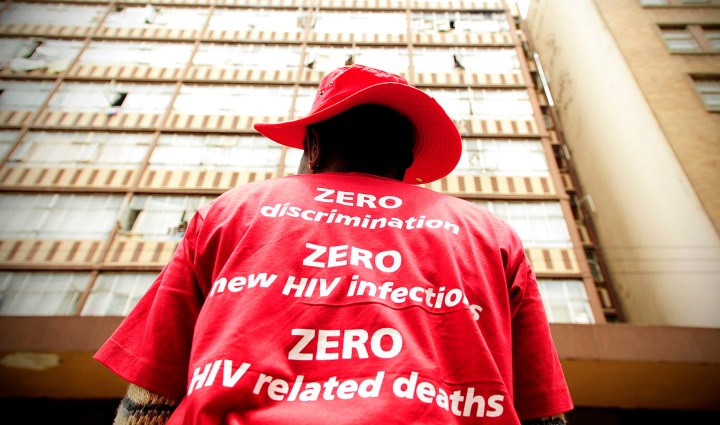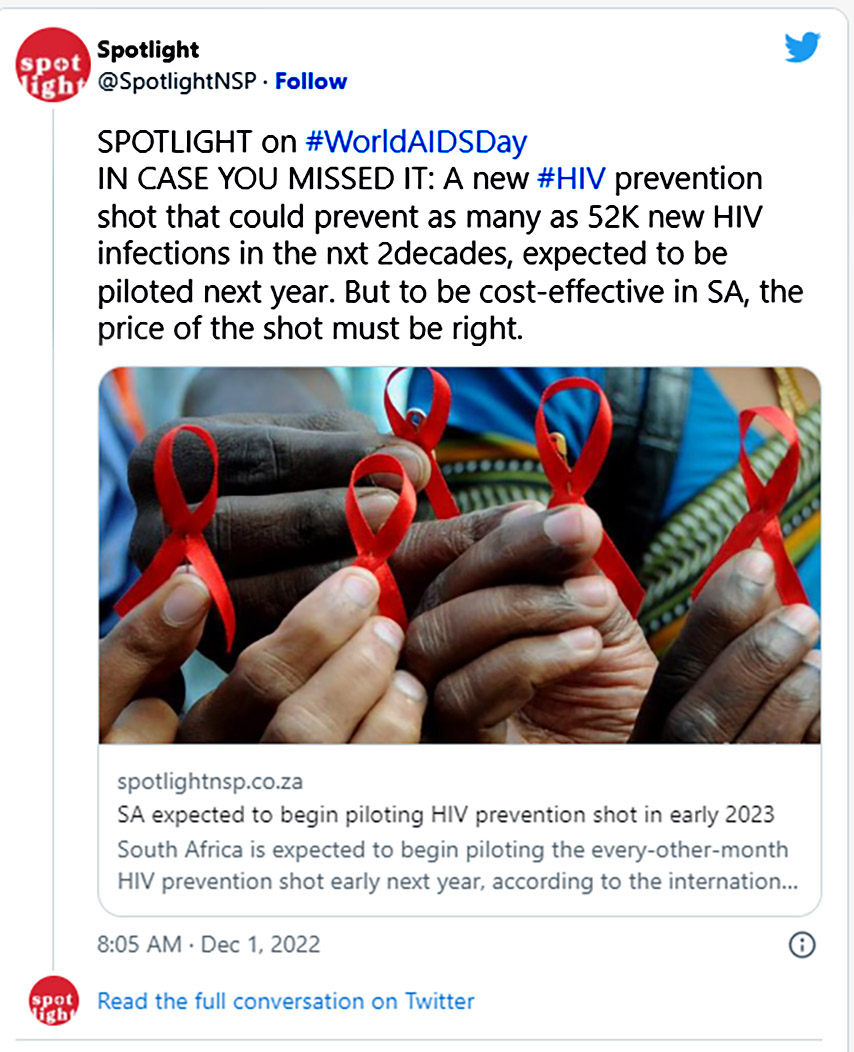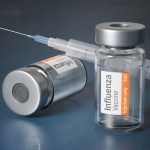SPOTLIGHT
In-depth — Experts agree multifaceted approach needed to boost behaviour change efforts in the PrEP era

Thabo Molelekwa asked several experts what behaviour change communications should look like in this new era of HIV prevention.
HIV prevention pills are becoming more widely available in South Africa and the country is set to soon start piloting the use of an HIV prevention injection and vaginal ring. But merely having these pre-exposure prophylaxis (PrEP) tools available in clinics and other places does not mean people will use them.
This dynamic is nothing new.
As seen with Covid-19 vaccines, some people will take up an intervention and others will not. It is also nothing new to have awareness or communications campaigns aimed at encouraging certain behaviours and discouraging others. Some, like encouraging HIV testing and condom use, have worked relatively well — others like promoting abstinence have failed.
So what lessons can we take from the last few decades of health behaviour change efforts as we enter the era of HIV prevention pills, rings and injections?
Meet people where they are
One common refrain from experts we spoke to is that behaviour change efforts have to take into account the views and lived realities of the people the efforts are aimed at. What is needed, argues Professor Susan Goldstein, Deputy Director and COO at the SAMRC Centre for Health Economics and Decision Science — Priceless SA, is holistic social and behaviour change communication that engages with not only the individual but the social, economic, commercial, and political environments that the individual finds themselves in. This should take into account social norms, patriarchy, poverty, gender-based violence, and unemployment.
“Behaviour change communication needs to entail an interactive approach. [It] is adopted in order to develop the most appropriate messages through inclusion of relevant stakeholders, including representatives of the communities or populations for whom the messages are being developed,” says Professor Thesla Palanee-Phillips of the Wits Reproductive Health and HIV Institute (Wits RHI). Furthermore, she adds, stakeholders who are crucial to the implementation of these efforts need to be capacitated and supported to plan for and ensure the incorporation of these activities as part of a larger comprehensive and sustainable programme.
The importance of sustaining such efforts over time is another common theme.
“Social and behaviour change is a process,” says Goldstein, “so a person doesn’t just start using a condom (or antiretroviral therapy) and then your job is done. They need to continue to do this over their lifetimes.”
There also seems to be general agreement that it is better to empower people with accurate information than to tell people what to do. Over 40 years of HIV programmes have taught us that telling people what to do because they’re at risk won’t work, says Mitchell Warren, Director of Avac. He says success depends on meeting people where they are; empowering them to drive campaigns; and providing them access to what they want, when they want it, from where they want it, and from whom they want it.
According to Warren, successful behavioural change communication campaigns should always begin with the potential audience in the centre — understanding their wants and needs and desires — not what experts or professionals want to accomplish. He says these campaigns need to be iterative — always reflecting on what is working and what is not, and adapting to changing contexts and new information.
Speaking about the future of PrEP, Warren says that the main lesson is that PrEP is not just a product — it needs to be a comprehensive programme that meets people where they are.
“One key lesson is that all PrEP programmes need to appeal to people’s real concerns and desires — and not what public health experts think. The evidence is clear that we must listen to potential users and be guided by them, not the other way around,” he says.

Give people choices
“When we think about HIV prevention and the range of modalities coming through the pipeline into implementation, we should look to the contraceptive world and learn important lessons from it,” says Professor Saiqa Mullick of Wits RHI.
She says the first is that the providers have been dealing with providing the choice of contraceptive products for decades. Clients are provided with information to choose and switch methods to fit their lifestyle. Where more contraceptive choices are available, she says better uptake and coverage of contraception is achieved.
“We anticipate that increasing the number of PrEP options will have a similar effect on use of PrEP and that we will ultimately see higher uptake, coverage, and impact,” says Mullick.
Currently, PrEP is only available in pill form in South Africa. But, as Spotlight recently reported, pilot projects set to start early next year will offer people a choice of pills, the vaginal ring, and the injection.
According to Mullick, there is no one product that is going to be the best fit for everyone, but having choices is important. “The more choice we have, the more use and impact we can have on the epidemic,” she says.
Access and accurate messaging
One of the cornerstones of successful behaviour change, according to most of our sources, is to empower people with accessible and scientifically accurate information about HIV or other health issues.
Palanee-Phillips argues that before individuals within communities can reduce their level of risk or change their behaviours, they must first understand the basic facts about HIV, assess and modify their attitudes, learn new skills, and gain access to appropriate sexual reproductive health (SRH) products and related SRH services.
Visit Daily Maverick’s home page for more news, analysis and investigations
“We must achieve radical behavioural changes — both between individuals and across large groups of at-risk people — to reduce HIV incidence. Once achieved, it is essential that such changes are sustained. We still need to do better to understand novel ways of influencing behaviour change. Access to HIV prevention information, messages, skills, and biomedical HIV prevention technologies is essential, and a fundamental human right, and we all could do more to ensure this happens,” Palanee-Phillips says.
Part of successfully getting scientific information across has to do with who is communicating the information.
“We know that empowering messaging from a trusted source works,” says Mullick. She adds that messaging that empowers and encourages people to use HIV prevention options so that they can take their health and wellness into their own hands works best. She says that a consistent message needs to come from multiple sources, the community, peers, leaders, health providers, parents, and significant influencers in people’s lives.
And of course, empowering people with accurate information helps little if people are not in a position to use that information.
“Behavioural change communication is a key component of combination HIV prevention — but only when it is linked with the means to actually act on the message,” says Warren. “Communicating and promoting condom use won’t help increase condom use and prevent an HIV infection if it’s not linked to efforts to make condoms accessible and attractive to people. So the communication is just a start,” he says.
Starting young
One area of significant untapped potential appears to be behaviour change communications aimed at young people.
It is very hard getting adults to change their behaviour patterns once it is set, says Professor Linda-Gail Bekker, Director of the Desmond Tutu HIV Foundation. She says getting to young people and even children where we can cash in on evolving capacities can be very useful.
Goldstein is on the same page. “Starting at a young age is important as knowledge enables young people to start their sexual lives equipped to protect themselves (if the environment is right),” she says.
Goldstein says that a follow-up study of Soul Buddyz Clubs found that young women who had attended the clubs 10 years before had half the HIV rates than their peers from similar backgrounds who had not attended the clubs. These clubs are attended by young people aged 10 to 14 years of age and are safe spaces where young people are supported and empowered with accurate health and other information. (You can read more about Soul Buddyz Club here.) Goldstein previously worked for the Soul City Institute, which runs the Soul Buddyz Clubs.
Using multiple channels
As with many contemporary communications, there is an awareness that one size does not fit all and its best to use multiple channels of communication.
Mullick tells Spotlight that currently PrEP is promoted through multiple channels. This is through both online and on the ground through face-to-face interactions.
“Currently, there are a number of social media platforms, including the MyPrEP South Africa platforms on Facebook, Twitter, and Instagram, which provide information on PrEP, HIV prevention, and sexual and reproductive health and rights. These digital tools are combined with on-the-ground community engagement in communities through events conducted in collaboration with local clinics and NGOs as well as health talks and printed materials at health facilities,” she says.
According to Mullick, The @MyPrEPSouthAfrica Facebook page is one of our most popular channels and reaches on average anywhere between 16,000 – 20,000 users in a 7-day period.

Not good enough?
Warren points out that South Africa is now home to the largest PrEP programme in the world. “This is the result of terrific commitment and leadership from the National Department of Health, a range of donors and implementing partners, and strong support from civil society. There is still much work to do, especially as we add more PrEP options, but the programmatic foundation is very strong.”
But while PrEP is now offered at many of the country’s public sector clinics, there are question marks over how well the country has done in promoting PrEP to people who may benefit from it.
Goldstein says that currently, in terms of HIV behavioural change communication, she believes that South Africa isn’t doing enough and isn’t coordinated enough. “Sadly, home-grown solutions are often not valued by funders and in my view, we have been forced to use interventions that were developed on small groups of people in the North and re-formatted for SA without any involvement of the public/communities,” she says.
“We have done some of this well in the past but mostly, it has been done badly,” says Bekker when asked about the country’s behaviour change communications. “Often, we have used a ‘loss frame’ approach — all the reasons why people need to stop doing things or change our behaviours. This isn’t easy or popular. Also pre-social media, we had to rely on structural mass campaigns, which are often expensive to set up and maintain and are quite static. In this era of social media there is, of course, much more opportunity for innovative messaging,” she says. Bekker suggests, “We could learn a lot from the marketing world about how to get people to adopt certain behaviours.”
According to Bekker, among the first things to acknowledge is that it (behaviour change communication) shouldn’t be an afterthought. “It should be properly thought through. We should hear from the end users, it should be tested, and it should be dynamic.” She adds that this will take resources and expertise. “Unfortunately, this aspect is often an afterthought and under-resourced. It needs to be tailored, relevant, and accessible to the individual, so it may need to be tweaked depending on who your end user is. One size doesn’t fit all and it should be dynamic over time,” she says. DM
*This article was published by Spotlight – health journalism in the public interest.




















Comments - Please login in order to comment.